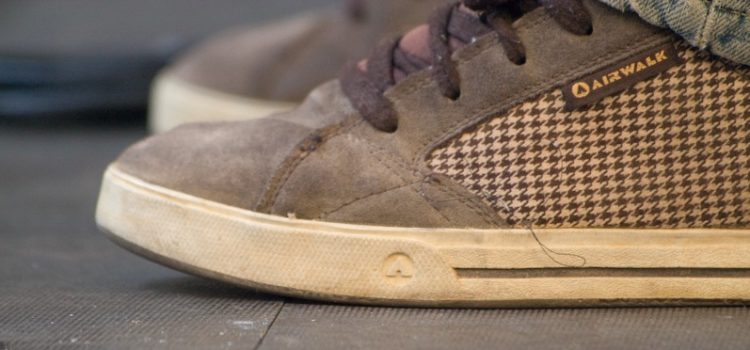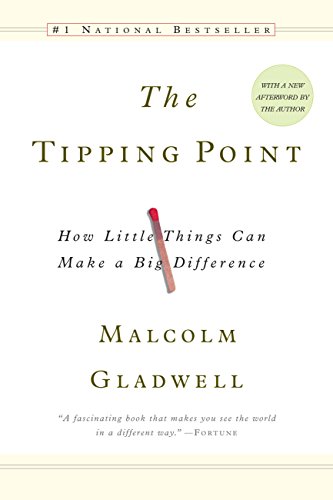

This article is an excerpt from the Shortform summary of "The Tipping Point" by Malcolm Gladwell. Shortform has the world's best summaries of books you should be reading.
Like this article? Sign up for a free trial here .
Who is DeeDee Gordon? How did she get preppy kids to wear skater shoes, resulting in the epidemic success of the shoe company Airwalk?
DeeDee Gordon is a maven able to spot trends that are about to explode. She was responsible for making Airwalk’s skater shoes mainstream, which led to the company’s widespread success.
We’ll cover how DeeDee Gordon turned Airwalk’s branding around and how ideas like Gordon’s become epidemics through the diffusion model.
How DeeDee Gordon Got Preppy Kids to Wear Skater Shoes
A San Diego-based shoe company named Airwalk began producing shoes in the mid-1980s aimed at hard-core skateboaders, but achieved epidemic popularity in the 1990s through an advertising campaign that translated skater fashion trends to mainstream buyers.
Airwalk’s advertising agency, Lambesis, hired a Maven named DeeDee Gordon to spot social epidemics that were about to tip — from kung-fu movies to interest in Tibet and the Dalai Lama. DeeDee Gordon contracted a team of Innovators across the country, and regularly checked in with them to find out what music, fashion, television shows, and topics they were interested in. By noting their varied interests over time, then seeing what the mainstream caught onto several months later, DeeDee Gordon was able to track and forecast trends and ideas that would soon advance from the Innovators and Early Adopters to the Majority.
Lambesis put a twist on those themes and, just as the trends were hitting mainstream popularity, incorporated them into the shoe ads in a way that appealed to young buyers (e.g. a kung-fu parody where the Airwalk-wearing main character uses his skateboard to fight off the ninja villains). DeeDee Gordon used her Mavenly knowledge of trends to tap into the public’s interests and translate a niche shoe designed for skateboarders to mainstream popularity.
Lambesis’s ad campaigns not only rode the wave of these trends, but themselves helped tip these trends into epidemics by translating less accessible ideas into more digestible forms. For example, they took many young adults’ growing interest in the Dalai Lama and the occupation of Tibet and created an ad showing a Tibetan monk cheating on a test by looking at notes he’d scrawled on the sides of his Airwalk shoes. The ads tweaked somewhat obscure trends and translated them into a context that was more familiar to the mainstream. This was thanks to DeeDee Gordon.
How Ideas Become Epidemics: The Diffusion Model
DeeDee Gordon utilized what’s called the diffusion model to catch the emerging trends. The diffusion model is a term in sociology for the way a contagious idea or product spreads among people who adopt it at different phases.
- First, the Innovators take hold. Innovators are a fairly small group of more adventurous people or companies who are willing to take the risk and go out on a limb to try this idea.
- Then, the Early Adopters join in. They are also risk-takers, but slightly less so. Early Adopters are respected, thoughtful opinion leaders who observed the Innovators before taking the plunge themselves.
- After the Early Adopters, the masses jump on board in two waves: the Early Majority and the Late Majority. These majorities are more cautious and skeptical to try something new until the well-respected Early Adopters test it out.
- Finally, the Laggards join just as the swell of the epidemic falls off. Laggards are slow to adopt new innovations because they see no reason to change; why fix what’s not broken?
Different factors come into play each time an idea or product advances to the next group of adopters, because each group’s attitude and reasoning for adoption is different. Both Innovators and Early Adopters have a revolutionary mindset and are inherently open to innovations that will give them an edge, despite considerable risk. In the case of Airwalk, DeeDee Gordon was able to see who the innovators and early adopters were and what they were adopting.
- In a market setting, these are small companies who are willing to take big risks and try new ideas or products before they have been proven or before their prices have dropped.
However, before an idea or product moves from the Early Adopters to the Early Majority, a gap must be bridged; the fundamental difference in the visionary attitude of Early Adopters versus the caution of the Early Majority creates a chasm where would-be epidemics can fall off. This is where the Law of the Few becomes critical: Connectors, Mavens, and Salesmen can act as translators to make the seemingly revolutionary actions of the Innovators and Early Adopters attractive to the more mainstream and traditional majorities. DeeDee Gordon also served as a translator, helping make obscure ideas and products mainstream.
- In a market setting, the Early Majority would be the big companies that have a more complex and established workflow that needs to be adjusted to accommodate new innovations. These companies will take the extra time to build safety nets and manage risks if they decide to adopt a new technology.
Translating Messages, Products, and Services
In general, most people naturally resist change and innovation in favor of what’s familiar, comfortable, and working well enough. DeeDee Gordon knew this. A much smaller population (the Innovators and Early Adopters) give an idea or product its kickstart, but the masses ultimately must get on board for an epidemic to take hold. This is where translation is necessary to make new ideas or products more palatable and bridge the gap between the risk-takers and the rest of us.
- (Shortform example: Think of this in terms of fashion trends. Fashion-forward Innovators may start wearing jeans that are totally ripped and shredded. That’s a little extreme for the mainstream shoppers, but translators take it back a notch and wear jeans with smaller holes in the knees, bridging the gap and making the trend more appealing to the majority.)
Connectors, Mavens, and Salesmen each use their strengths differently to translate messages in a way that they take on a deeper meaning to the people receiving the message (thus making it stickier).
- As members of so many different worlds, Connectors are able to act as an intermediary in translating ideas from one community to another.
- Mavens’ extensive knowledge and detailed understanding of (sometimes complex) topics allows them to adeptly explain information to people with less or no expertise.
- Salesmen use their nonverbal abilities and ability to connect emotionally with people to make information and ideas more relatable.
DeeDee Gordon’s gift is her ability to see upcoming trends and exploit them to spread ideas and products.
———End of Preview———

Like what you just read? Read the rest of the world's best summary of "The Tipping Point" at Shortform . Learn the book's critical concepts in 20 minutes or less .
Here's what you'll find in our full Tipping Point summary :
- What makes some movements tip into social epidemics
- The 3 key types of people you need on your side
- How to cause tipping points in business and life






